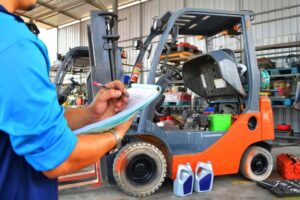 Powered industrial trucks, commonly called forklifts or lift trucks, are used in many industries, primarily to move materials. Forklifts can also be used to raise, lower, or remove objects on pallets or in boxes, crates, or other containers. Powered industrial trucks can either be ridden by the operator or controlled by a walking operator. Over-the-road haulage trucks and earth-moving equipment that has been modified to accept forks are not considered powered industrial trucks.
Powered industrial trucks, commonly called forklifts or lift trucks, are used in many industries, primarily to move materials. Forklifts can also be used to raise, lower, or remove objects on pallets or in boxes, crates, or other containers. Powered industrial trucks can either be ridden by the operator or controlled by a walking operator. Over-the-road haulage trucks and earth-moving equipment that has been modified to accept forks are not considered powered industrial trucks.
Every year, the Occupational Safety and Health Administration (OSHA) releases a list of the top ten most frequently cited safety and health violations for the fiscal year. Violations of the Powered Industrial Trucks, general industry (29 CFR 1910.178) are consistently on the list; and were ranked 7th for the FY2020. Several thousand injuries related to forklifts occur in U.S. workplaces every year.
According to OSHA, tip-overs are the leading cause of fatalities involving forklifts, representing about 25% of all forklift-related deaths. Common forklift problems that lead to worker injuries include three directly related to employer compliance and two related to driver responsibilities. Employer compliance issues include:
Common problems that relate to worker responsibilities include: